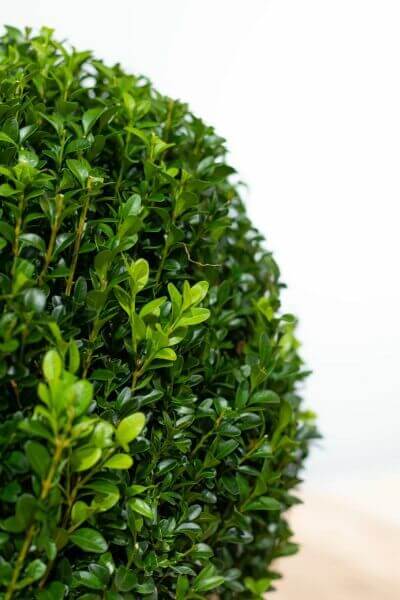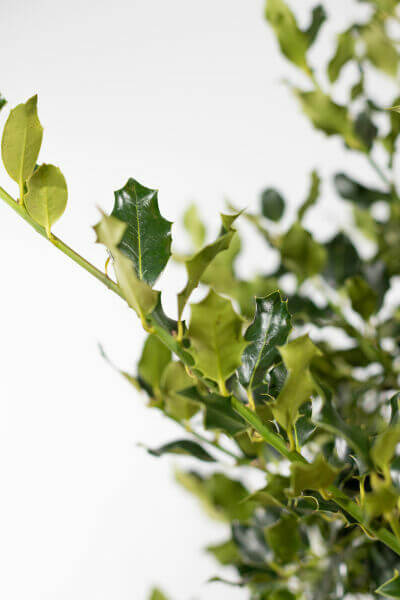Best Hedging Plants For Texture
Boost your garden's appeal with lavish hedge ranges such as Yew (Taxus), Thuja, Laurel, Photinia, and Bamboo, commemorated for their structural stability and ecological advantages.
Yew and Thuja supply evergreen protection and winter season durability, while Laurel provides rapid growth and broad, aromatic leaves.
Photinia includes seasonal appeal with its vibrant red foliage, and Bamboo lends a low-maintenance, serene atmosphere.
These hedges enhance air quality, decrease noise, and develop tranquil, personal spaces.
Proper planting, spacing, and upkeep make sure vigorous growth and environmental harmony.
Check out how these rich varieties can raise your garden's charm and wellness.
Secret Takeaways
Transform Your Garden With Lush Hedge Ranges
- Select Yew for its dense, evergreen growth and unequaled longevity.
- Opt for Laurel for its quick growth and broad leaves, making sure fast privacy.
- Pick Photinia for its dynamic seasonal foliage, which turns a striking dark red.
- Make use of Bamboo for a low-maintenance, winter-hardy hedge with aesthetic appeal.
- Area plants 2-3 per meter and prune routinely for optimal development and health.
Popular Hedge Plants
When transforming a garden with lavish hedge varieties, it's necessary to consider popular hedge plants such as Yew, Thuja, Laurel, and Photinia due to their special qualities and advantages.
Yew (Taxus) is highly respected for its longevity and thick, green development, making it a prime choice for sustaining landscapes.
Thuja is noted for its evergreen foliage and robust winter season resilience.
Photinia adds seasonal vibrancy with red leaves that darken with time, developing dynamic visual appeal.
Laurel uses rapid growth and fragrant, broad leaves, suitable for fast privacy.
Furthermore, Bamboo is an exceptional choice for atmosphere, using a low-maintenance, winter-hardy option that improves the garden's visual with its elegant, swaying walking sticks.
These selections accommodate a range of horticultural needs and preferences.
Advantages of Garden Hedges
Garden hedges use a wide range of benefits, making them an important addition to any landscape. These natural barriers are cost-efficient to execute and supply substantial wind protection, improving air flow and adding to sound decrease. The thick foliage of hedges like Thuja and Beech makes sure privacy by obstructing exposure, producing a remote and serene environment.
Hedges also play a vital role in microclimate policy, offering a steady environment that cultivates plant growth and decreases temperature level fluctuations. Their detailed leaf structures filter toxins, enhancing air quality and contributing to a healthier garden community.
Moreover, hedges stand out in noise decrease, taking in and deflecting acoustic waves to lower ambient noise levels. This dual performance of supplying both acoustic and visual privacy improves the overall serenity and visual appeal of any garden.
Planting and Maintenance Tips
For an effective hedge, precise preparation of the planting location is essential. Make sure the soil has proper pH and drainage to support strong root advancement.
Space the plants properly for the selected types. Water the hedge frequently throughout its preliminary growth stage, adjusting as needed with seasonal modifications.
Execute a organized pest control and disease avoidance method, using chemical or organic treatments when needed. Frequently check for aphids, termites, and fungal infections.
Apply mulch to maintain wetness and reduce weeds. Seasonal pruning promotes dense growth and air circulation, important for plant health.
Following these standards will help you cultivate a lively, well-maintained hedge that improves the beauty of your garden.
Spacing and Trimming Standards
Spacing and Cutting Guidelines
Proper spacing and trimming are vital for cultivating healthy, aesthetically appealing hedges. Adequate spacing guarantees each plant receives adequate nutrients, light, and air flow.
Follow these guidelines for optimal hedge maintenance:
- Spacing: Position hedge plants 2-3 plants per meter to encourage robust growth.
- Pruning Techniques: Routine pruning is necessary for preserving preferred hedge height and shape. Trim new growth in summer and cut back older wood during winter season.
- Seasonal Care: Change cutting schedules and approaches according to seasonal requirements to guarantee plant health.
- Hedge Height: Routinely monitor and trim to maintain the desired hedge height and achieve consistent aesthetics.
Sticking to these steps will ensure your hedge grows, boosting both the appeal and performance of your garden.
Choosing the Right Hedge
Choosing the Right Hedge
Selecting the proper hedge includes evaluating aspects such as fully grown height, foliage density, and environmental strength. Successful hedge plant selection needs comprehending each species' development qualities and site-specific adaptability.
For instance, Yew (Taxus) provides excellent durability and dense development, while Thuja is noteworthy for its winter season durability. In addition, considering upkeep requirements is important; fast-growing species like Laurel or Privet need routine trimming, whereas low-maintenance options like Bamboo or Ivy might be preferable for those looking for very little upkeep.
Environmental elements such as soil type, light schedule, and moisture conditions need to also assist the selection process. This mindful approach guarantees the picked hedges will flourish, offering both aesthetic and functional benefits to the garden landscape.
Delivery and Planting Advice
To ensure your hedge plants prosper, they should be delivered by specialized carriers and planted promptly upon arrival.
Follow these vital actions for successful planting:
- Soil Preparation: Improve the soil with raw material to enhance drainage and nutrient content.
- Planting Depth: Develop a trench twice the width and equal to the depth of the root ball.
- Watering Strategies: Water completely after planting, keeping the soil consistently damp however not saturated.
- Mulching: Apply a layer of mulch to keep moisture and reduce weeds.
Consumer Assistance and Service
Given the essential role of prompt help in horticultural pursuits, our consumer assistance group is available six days a week through telephone, email, and social media to provide professional recommendations and quickly resolve any concerns. Their dedication to quick response times guarantees client fulfillment by solving questions connected to plant health, optimum planting approaches, and upkeep schedules.

Schedule
Within 48 hours
This thorough support group, reinforced by a stellar 9.3/ 10 client score, highlights our dedication to boosting the gardening experience for every single customer.
Regularly Asked Concerns
The Length Of Time Does It Consider Hedge Plants to Develop?
Hedge plants click here usually need one to 3 years to end up being totally developed, with the specific period differing by types and growing conditions.
Efficient care during this crucial period is important for robust growth. Consistent watering, alert weed control, and proper fertilizer application are essential in promoting strong root advancement.
For instance, fast-growing species like Laurel may establish faster, while slower-growing ranges such as Yew may take longer. Persistent maintenance accelerates the facility procedure, leading to healthy and dense hedges.
What Are the Best Hedge Plants for Personal Privacy?
The concern of the best hedge plants for privacy includes examining evergreen and deciduous choices.
Evergreen hedges like Thuja, Laurel, and Cypress offer year-round coverage, making sure continuous privacy.
On the other hand, deciduous hedges such as Beech provide seasonal privacy, shedding leaves in cooler months.
Secret maintenance pointers for personal privacy hedges consist of regular cutting, fertilizing in spring, and appropriate spacing-- generally 2 to 3 plants per meter.
In addition, consistent watering and diligent weed elimination are essential for promoting healthy, thick growth.
Can Hedge Plants Bring In Wildlife to My Garden?
Yes, hedge plants can draw in wildlife to your garden by supplying essential advantages like shelter, food, and nesting sites, therefore improving regional biodiversity. For example, yew, holly, and laurel are exceptional for drawing in birds, while ivy supports a range of bugs.
Nevertheless, it is necessary to keep in mind that there are some downsides, such as increased maintenance to handle pests and regular upkeep. Carefully selecting and keeping hedge varieties can help stabilize these drawbacks and advantages, eventually fostering a dynamic and sustainable community in your garden.
Are There Any Blooming Hedge Plants Available?
Yes, there are flowering hedge plants readily available that can enhance the charm of your garden.
For instance, Elaeagnus, likewise called Olive Willow, produces fragrant white flowers in the fall, adding a touch of sophistication.
Photinia, another popular option, showcases vibrant red leaves that develop into an abundant green, developing a vibrant visual effect throughout the seasons.
To guarantee these plants prosper, it's vital to practice appropriate pruning methods and seasonal upkeep, such as cutting brand-new development in the summer and cutting back in the winter season.
These procedures will assist maintain the health and aesthetic appeal of your flowering hedges.
How Do I Prevent Bugs in My Hedge Plants?
To prevent pests in hedge plants, employ natural pest control techniques and preserve appropriate hedge care. Present helpful pests like ladybugs, which victimize damaging bugs, to develop a well balanced ecosystem.
Regularly examine your hedges for signs of infestation and quickly eliminate any afflicted parts to prevent the spread. Guarantee the health of your hedges by applying balanced fertilizers and providing adequate water.
Make use of mulching to maintain soil wetness and appropriate spacing to decrease plant stress and promote robust development. These practices jointly assist in lessening insect issues and maintaining a healthy hedge.
Conclusion
In essence, picking the best hedge varieties such as Yew, Thuja, and Laurel can change any garden into a serene sanctuary. These plants provide year-round greenery, boost aesthetic appeal, and offer useful advantages like noise decrease and wind security.
Proper planting techniques, precise spacing, consistent watering, and seasonal trimming are essential for ideal growth.
Reliable shipment services and professional client support make sure a smooth experience from purchase to planting, making it easier than ever to elevate your outdoor area.
Garden hedges use a wide range of benefits, making them a valuable addition to any landscape. These natural barriers are cost-efficient to execute and provide substantial wind protection, boosting air circulation and contributing to sound reduction. The thick foliage of hedges like Thuja and Beech ensures personal privacy by obstructing exposure, creating a secluded and tranquil environment.

Pruning Strategies: Routine pruning is important for maintaining wanted hedge height and shape. Trim new development in summertime and cut back older wood during winter season.